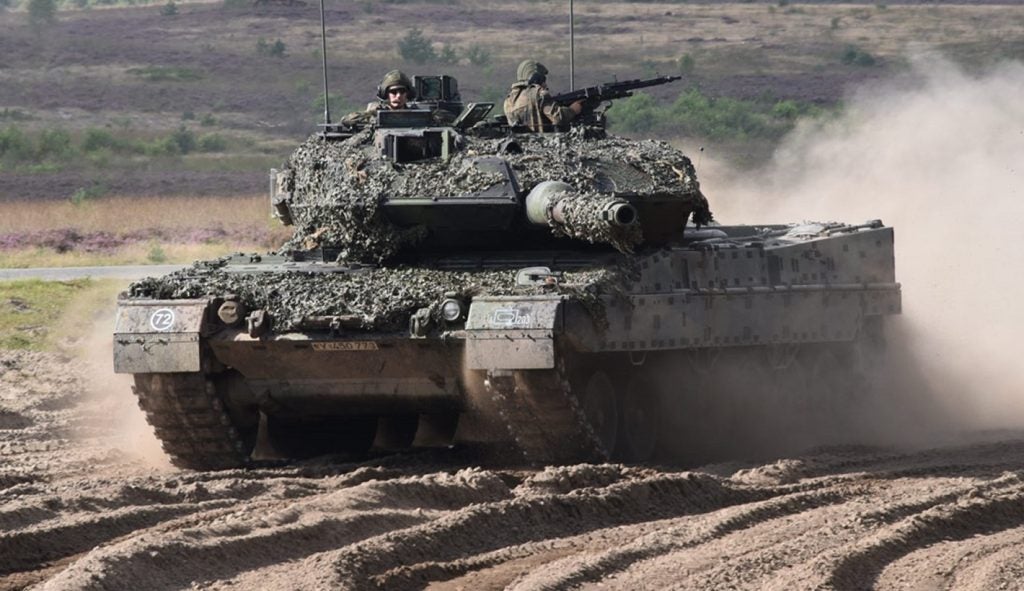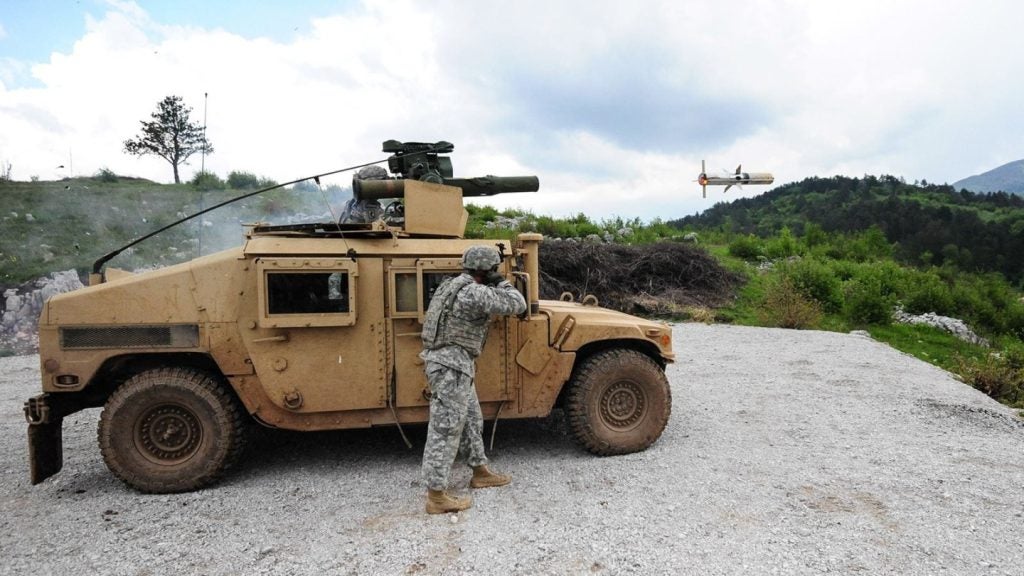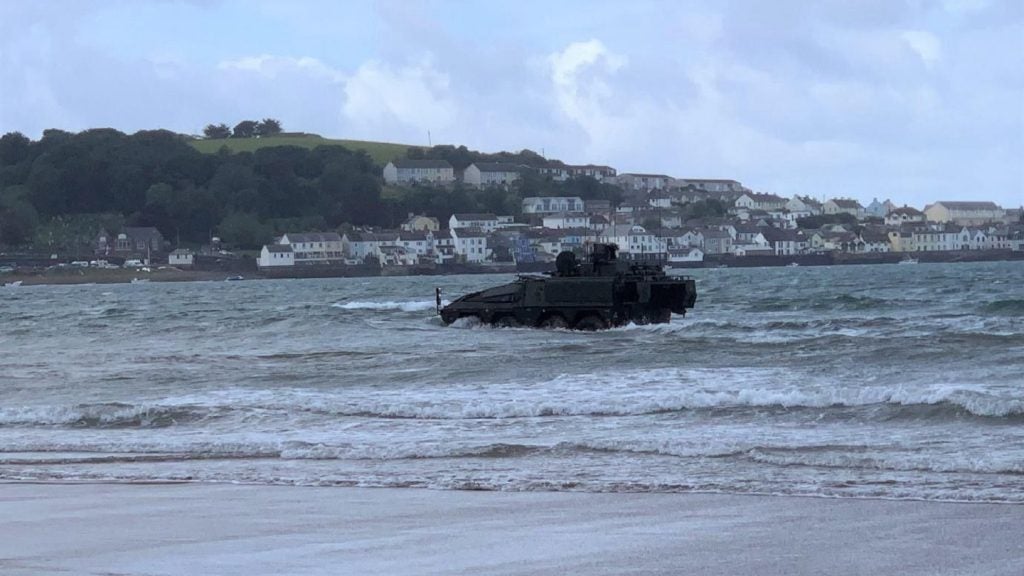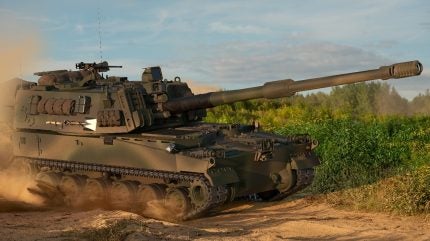
Following news that the UK selected the German Remote Controlled Howitzer 155mm wheeled artillery system (RCH155) for its Mobile Fires Programme (MFP), Hanwha Aerospace UK expressed its disappointment over the rejection of its K9 Thunder tracked system in an exclusive roundtable event on 8 May 2024.
During a visit to Berlin on 24 April 2024, ahead of talks with the German Chancellor Olaf Scholz, the UK Prime Minister Rishi Sunak announced that, “as an initial step,” the UK and Germany will jointly develop RCH155 systems, developed by Krauss-Maffei Wegemann (KMW), which the British Army will fit atop its Boxer mechanised fighting vehicles.
Simon Humphrey, vice president of business development and strategy at Hanwha Aerospace UK, said the company feels “bruised” by the decision.
Meanwhile, a UK Ministry of Defence (MoD) spokesperson told Army Technology:
“We have received formal cross UK government approval for the MFP project team to commence an Assessment Phase to collaborate with Germany on the development of the Boxer based RCH155.”
This ‘Assessment phase’ will determine the most appropriate manufacturing approach, and confirm the number of platforms required by the British Army.
How well do you really know your competitors?
Access the most comprehensive Company Profiles on the market, powered by GlobalData. Save hours of research. Gain competitive edge.

Thank you!
Your download email will arrive shortly
Not ready to buy yet? Download a free sample
We are confident about the unique quality of our Company Profiles. However, we want you to make the most beneficial decision for your business, so we offer a free sample that you can download by submitting the below form
By GlobalDataThe MoD stipulated that they had assessed a number of procurement options and concluded that a collaborative approach with Germany was the most appropriate. No further comment was made explaining their decision or the lack of a competitive evaluation of their options.
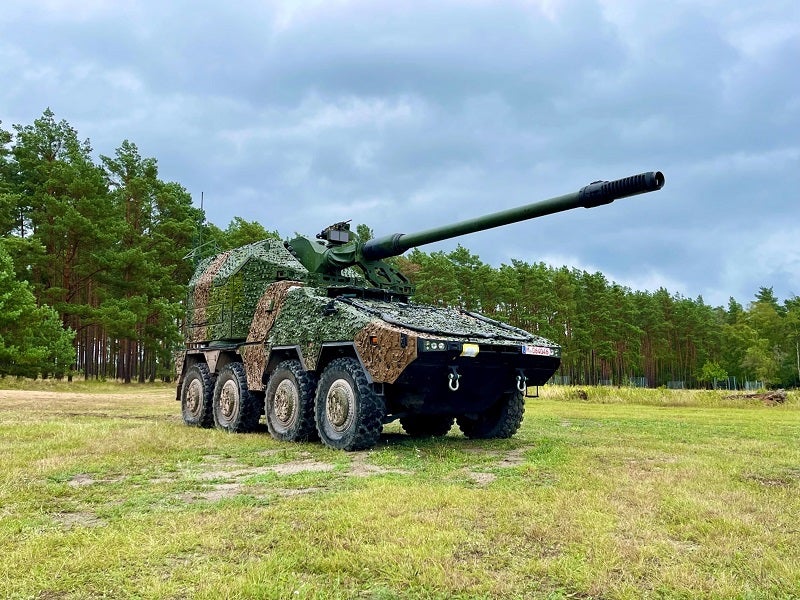
K9 timeline
The K9 provides effective and deep fire support in all kinds of theatres. Built on a mobile platform, the K9 delivers a high rate of fire at long range.
K9 development began in 1989, while the company rolled out and tested the first prototype in 1996. The design phase was completed in 1998 and serial production began in 1999.
The K9A1 upgrade entered the market in 2018; it is equipped with improvements such as automatic fire control system, driver’s night periscope, and auxiliary power system for enhanced efficiency.
Hanhwa went on to propose the K9A2, an advanced variant of the K9 howitzer, for the UK’s MFP programme that aims to upgrade the artillery capabilities of the British Army.
K9A2 is expected to enhance the firing rate, automatic ammunition loading, and other capabilities of the artillery. Furthermore, this MFP solution will feature mine protection kits, an uncrewed turret, and composite rubber tracks.
Currently, Hanwha have the next A3 iteration currently in the research and development phase in South Korea. When asked about the timeline, Humphrey confirmed A3 will enter the market in the early 2030s.
K9A3 will have a larger 58 calibre gun and increased autonomy as Hanwha seek to bring the system within a crewed-uncrewed teaming concept alongside other assets.
What does the K9 offer?
The main 155mm, 52 calibre weapon has a burst rate of fire of three rounds per 15 seconds and a maximum rate of fire of six to eight rounds a minute for three minutes.
Sustained rate of fire is two to three rounds a minute for one hour. Hanwha Aerospace designed Thunder to meet the up-to-date tactical concept on shoot and scoot.
The gun can fire a standard M107 high-explosive (HE) projectile for a maximum range of 18km.
Maximum range firing the HE rocket assisted projectile with uni-charge of five zones, is 30km. It can also fire a K307 projectile with a modular-charge of six zones for a maximum range of over 40km.
MFP was meant to be a competitive acquisition
Strangely, the government’s decision was made without a competition to showcase what each contender had to offer – this was a point picked up by Humphrey in his address to the media.
“Hanwha is very disappointed. There’s no question about it. I’m professionally very disappointed that we haven’t been able to get K9A2 to the start line of a competitive process. I think that would have been the only way that we as a defence industry could guarantee we’re giving our soldiers survivability and lethality going forward.”
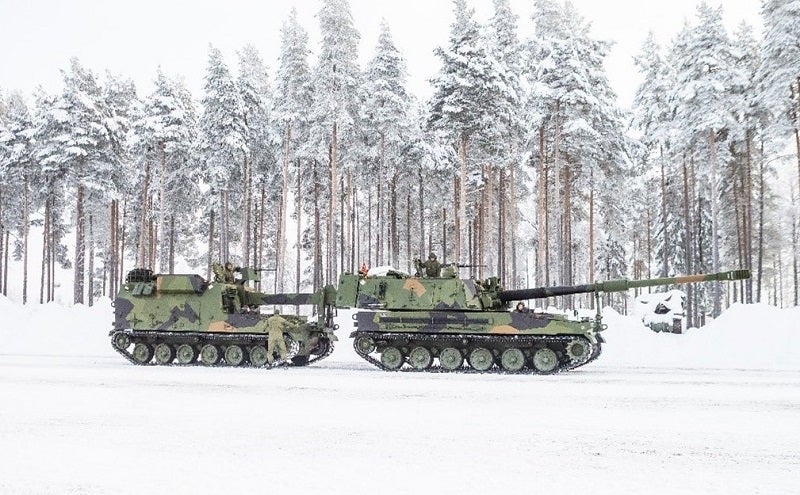
Sunak’s decision to select RCH155 neglected any chance of competition, which could be argued to divert away from the spirit of the new Integrated Procurement Model (IPM) put forward by his own government.
IPM implements timely delivery of systems across the UK Armed Forces. One critical enabler within this model are its checks and balances, which challenge assumptions right from the outset of a new programme, which is hoped will ensure better and more expert-informed decisions.
While Sunak’s unexpected decision does follow suit with the end goal of timely delivery, it could be said bypassing competition entirely excludes these checks and balances that are there to evaluate performance.
“We probably have never really felt that it’s been a level playing field.”
Simon Humphrey, vice president for business development and strategy, Hanwha Aerospace UK
“I think the K9 is a great contender to front up at a competitive process where it can prove whether or not it’s the thing that the British Army needs.
“I’m not sure [that] without a competition how you guarantee that you’re not marching down the path to some other procurement disappointment that we’re all very familiar with in our world. I just don’t understand how you can have confidence that you won’t,” he added.
“Hanwha is upset with the outcome of a single source decision taken by the Ministry of Defence [MoD]. We probably have never really felt that it’s been a level playing field. It’s been difficult to really view it as a way where everyone has been considered in equal fashion.
It should be noted that Humphrey added “there will be reasons behind [the decision] which I won’t try and unpack.”
Though, he speculated that perhaps the “single source became the only way to meet the [initial operating capability] and [full operational capability] dates toward the end of this decade.”
Future opportunities – AUKUS Pillar II?
With the UK’s MFP programme out of sight for the time being, Humphrey turned his attention to Hanwha’s global prospects.
With the accession of Japan to the second pillar initiative launched by the trilateral AUKUS partnership exploring technology advancements, the prospect of South Korean industry joining up is certainly on the table.
New partners will enter the fold of the AUKUS Pillar II phase, which focuses on developing a range of advanced capabilities, to share technology and increase interoperability.
It includes quantum technologies, undersea capabilities, artificial intelligence and autonomy, cyber, hypersonic and counter-hypersonic capabilities, and electronic warfare.
Among Pillar II activity so far, there has been work on enhancing autonomy with uncrewed ground vehicles and harnessing electromagnetic spectrum supremacy.
With the prospect of South Korea’s entry in sight, “we have got to move into the AUKUS space as a company,” Humphrey observed.
This article has been updated to reflect recent responses from the UK MoD.


